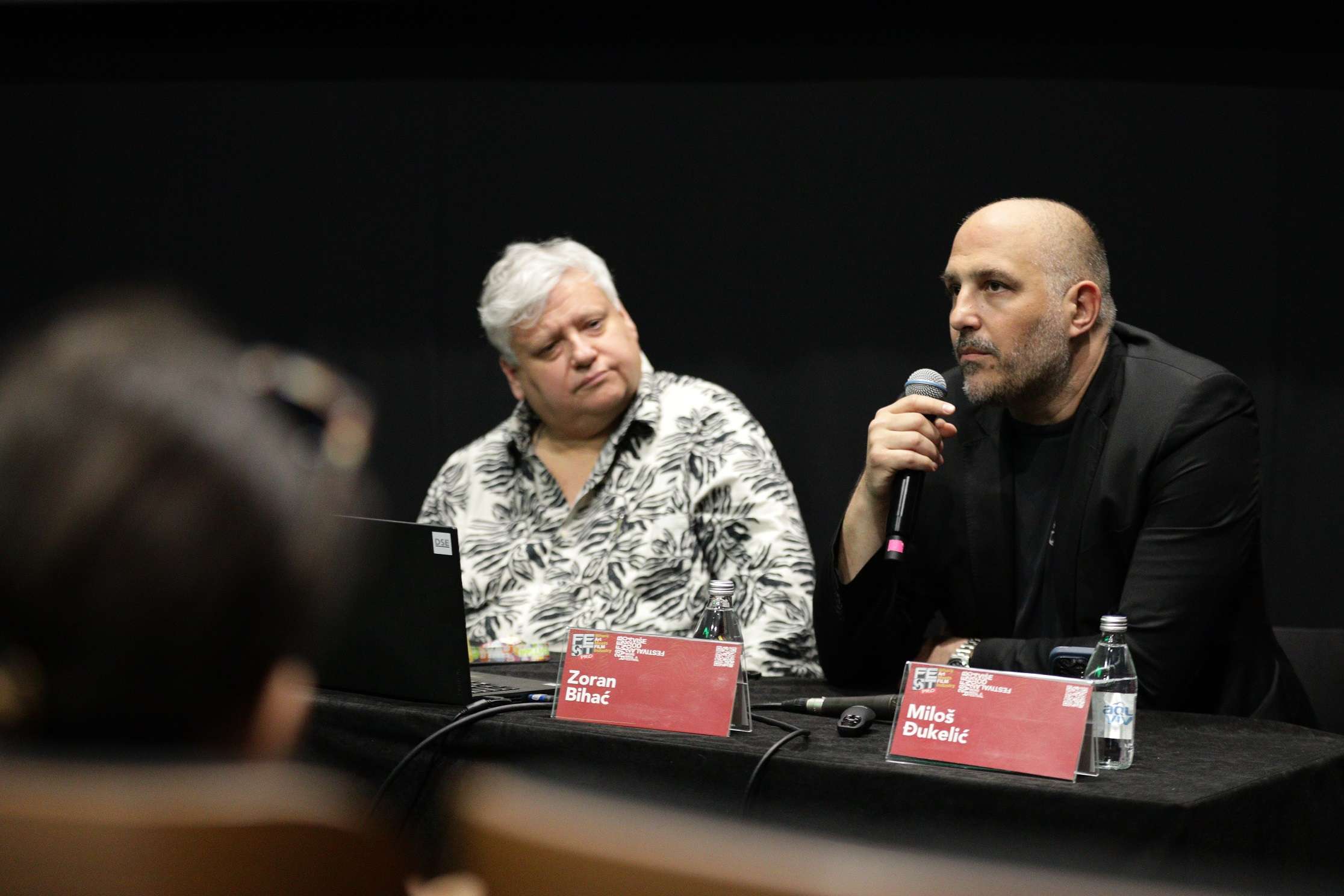The panel ‘The Job of a Casting Manager’, held on 1 March, was attended by Bojana Rnjak, an agent from Slavic Artists Management, Maria Christina Jarltoft, a casting director from Denmark, who also developed the casting application ‘Selfcast’, Anđela Stamenković, an actress
and casting director from the casting agency ‘Sav taj glumac’, Lukas Loughran, actor, Adel Csemez, casting director from Hungary and Timka Grin, casting director from Bosnia. The moderator was actress Katarina Radivojević.
We saw people from different professions, from different countries with different experiences. At the panel, we could hear the difference between a casting director and an agent, how casting directors work with actors on casting, and what their collaboration with directors and producers looks like. Those present at the panel also had the opportunity to ask questions and resolve any doubts regarding going to the casting and cooperation with the casting director.
The founder of the application, who also works as a casting director, Maria Christina Jarltoft, spoke on the panel, where the application ‘Selfcast’ was presented. She talked about how she came up with the idea for the site and the app, how the app worked, and talked about the experiences of other actors, who already had had the opportunity to try their luck at castings through the ‘Selfcast’ app. She also explained the legal aspect of the application, i.e. signing the contract through it, what happened if the actor had an agent or if they wanted to increase the fee. Apart from an acting perspective, she also described what the role of a producer on the ‘Selfcast’
app looked like.
We had the opportunity to listen to the lecture ‘Advantages and Possibilities of Filmmaking in Serbia’, where Sheila Fraser Milne, Fred Hedman from Great Britain and Sandra Đuričković and Igor Turčinović from Serbia spoke. The moderator was Martin Cuff. They came to the conclusion that filming in Serbia had many more good sides than disadvantages, that it provided an excellent opportunity for foreign productions, that the PFI studio complex in Šimanovci was at the level of European standards, and that Belgrade and Serbia had a bright future in the film industry. That apart from good conditions for filming, what attracted foreigners to filming in Serbia were, among other things, people who spoke excellent English, professionalism and expertise, and affordability of prices.
Sheila Fraser Milne spoke at the lecture ‘Making and Financing a Film’. She emphasized how important it was to stick to the film's budget and what should be done to ensure that during the shooting of the film, money was not wasted. She also gave an example of when a film failed or was abandoned, for example when an actor passed away, and talked about how to insure a film before the shooting started, how to get financing for a film and what could happen if there was
no adequate financial protection and insurance against external factors. Music video directors Zoran Bihać (among others, video director of the band Rammstein), Yariv
Horowitz, Guy Bolandi and Andy Morahan spoke on the panel ‘The Art of the Music Video’.
Miloš Đukelić was the moderator.
The lecture began with the director's story about his beginnings, how he found himself and managed in the music industry and directing. One of the things that was particularly emphasized was the fact that in today's world of technology, everyone had the opportunity to become a music video director and that it was imperative that everyone who was interested should take advantage of it. It was emphasized that in a world where everyone complained about the lack of money, no one was talking about how many new opportunities technology brought, to which the majority of the population had access. They agreed that artificial intelligence could do more good than bad in the world of music video directing, if used well. Janko Balandžić, Pavle Pavičić and Srećko Barbarić spoke at the last lecture on the third day of
FEST Pro, ‘SOKOJ - Music Copyright in Film’. They mostly talked about film music copyright from a legal perspective and explained what permissions producers needed to obtain before a certain track or composition was used in a film and what permissions were often forgotten about.
They explained all the doubts that people usually had about copyright, what things were copyrighted in general and how to avoid trouble when including music in a film.













